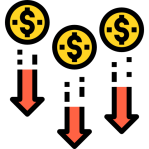Continuous delivery changes the way utilities receive new functionalities and enhancements from their software vendors. With this new approach, utilities have a better way to solve traditional modernization issues, respond promptly to business needs, and become more competitive in their markets.
Utilities are under constant pressure to keep up with technological developments, shifting customer expectations, and ever-changing market realities. Many companies are still using antiquated customer information systems (CIS) which hold back business development and make it hard to keep pace with the industry. Utilities have typically taken on big-bang modernization projects in an attempt to fix these problems; however, this risky and expensive approach often takes so long to get working that by the time new systems are operational, the industry has moved on and another upgrade is required to catch up. To avoid this situation, utilities need an agile CIS that evolves at the pace of the industry while guaranteeing availability, performance, usability, and security.
When considering the ingredients of a winning CIS solution that can help free utilities from the rigidity of their legacy systems, it is hard to look past Continuous Delivery. In stark contrast to the large and disruptive upgrade projects which have plagued the utility industry for years, this model involves the frequent delivery of enhancements and new features to support stable and continuous improvement. By choosing a CIS solution which uses Continuous Delivery, utilities can:
Avoid technological obsolescence
 Utilities that depend on rigid customer information systems will soon find that these systems become obsolete as new industry regulations and technological advancements move forward and leave them in the dust.
Utilities that depend on rigid customer information systems will soon find that these systems become obsolete as new industry regulations and technological advancements move forward and leave them in the dust.
Continuous delivery solves this problem by helping utilities to constantly update their systems and keep pace with the industry. In this approach, the software vendor provides incremental changes in a sustained effort to provide new and improved functionality while leaving behind business processes which lose relevancy. This is done in a non-disruptive way and saves both time and money when compared to the large step change of traditional upgrade projects.
Reduce time-to-market
 When using obsolete systems, utilities often miss out on the chance to offer the latest products and services made possible by emerging technologies. Moreover, legacy CIS solutions are so rigid that there is no way to quickly adapt them to industry and regulatory changes without going back to the vendor for customizations.
When using obsolete systems, utilities often miss out on the chance to offer the latest products and services made possible by emerging technologies. Moreover, legacy CIS solutions are so rigid that there is no way to quickly adapt them to industry and regulatory changes without going back to the vendor for customizations.
With continuous delivery, the cycle of recognizing an industry need, developing new functionality, and deploying it to utilities is shorter than ever. Receiving enhancements and new functionalities in this way makes a huge difference for utilities that are trying to stay ahead of the game, as they can be sure that their information systems are continuously evolving to better solve the current issues of their unique business context.
You may be interested in Enjoy constant business evolution with Smartflex
Reduce Total Cost of Ownership
 Implementing a large software update requires significant cost and effort, so much so that utilities typically put off upgrades and continue running with legacy systems for as long as possible. While this strategy works in the short term, the gap between the functionality they have and the functionality they need keeps growing and so too does the cost to bridge this gap.
Implementing a large software update requires significant cost and effort, so much so that utilities typically put off upgrades and continue running with legacy systems for as long as possible. While this strategy works in the short term, the gap between the functionality they have and the functionality they need keeps growing and so too does the cost to bridge this gap.
If utilities use a continuous delivery approach instead, these intimidating and expensive upgrade projects are broken down into small and steady system updates. This constant stream of updates is easier to manage than big upgrade projects so the implementation costs and overall TCO end up being lower.
Avoid the pain of big upgrade projects
 Just the thought of a big upgrade to IT architecture is painful for utility executives because it can mean re-designing a myriad of organizational and business processes, not to mention the effort expended in trying to make the upgraded system actually work. With the pace of industry advancements, companies may find themselves battling through a drastic redesign of their systems every few years, which is clearly not good for productivity.
Just the thought of a big upgrade to IT architecture is painful for utility executives because it can mean re-designing a myriad of organizational and business processes, not to mention the effort expended in trying to make the upgraded system actually work. With the pace of industry advancements, companies may find themselves battling through a drastic redesign of their systems every few years, which is clearly not good for productivity.
Fortunately, continuous delivery represents a pain-free way to update business solutions thanks to enhancements which come so frequently that they require minimal effort to administer and can provide utilities with support for the very latest industry trends.
Meet today’s needs instead of yesterday’s
 In a large upgrade project, the scope of the upgrade is decided at the very beginning and implementation usually takes a long time; this means that when the project is finally finished, it may not reflect the current needs of the company using it. With continuous delivery, upgrades come more frequently so the client gets more opportunities to steer the development of their business solution. This constant feedback loop strengthens the relationship between utilities and software vendors, improves quality assurance, and allows utilities to respond faster to their customers and the ever-changing needs of their industry.
In a large upgrade project, the scope of the upgrade is decided at the very beginning and implementation usually takes a long time; this means that when the project is finally finished, it may not reflect the current needs of the company using it. With continuous delivery, upgrades come more frequently so the client gets more opportunities to steer the development of their business solution. This constant feedback loop strengthens the relationship between utilities and software vendors, improves quality assurance, and allows utilities to respond faster to their customers and the ever-changing needs of their industry.




